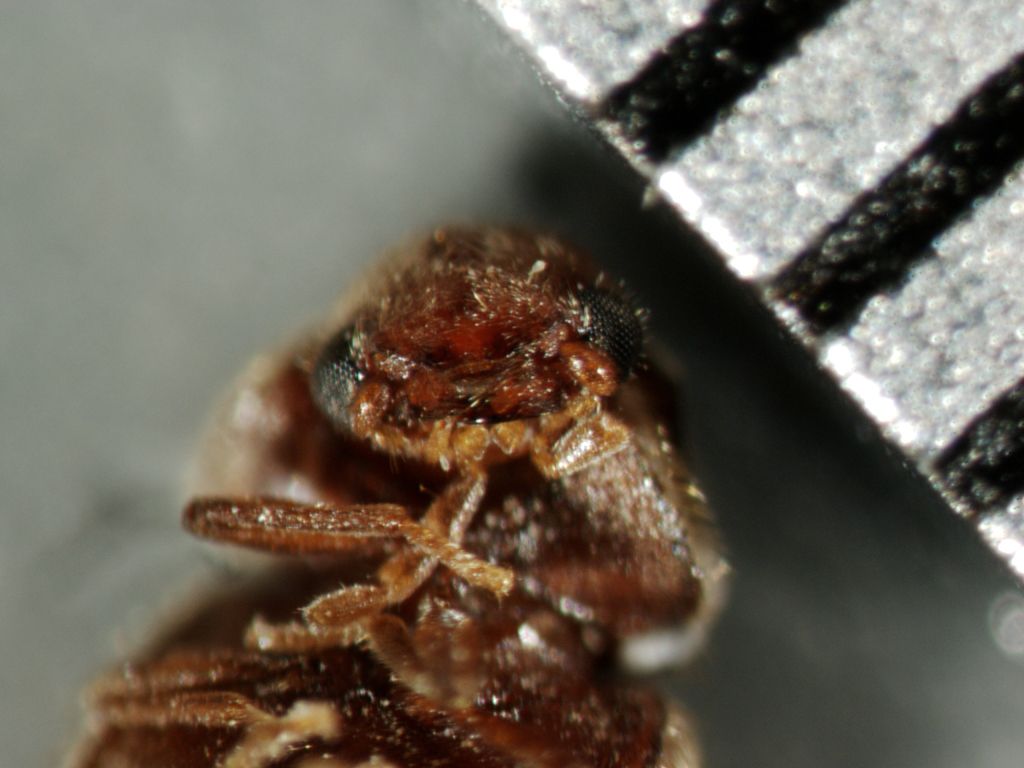|
|
Post by jerrytheplater on Aug 18, 2012 19:58:41 GMT -5
I was just cutting off the dried stalks of my Rocambole garlic last week and noticed a small (1/8") brown beetle flying around the area. When I looked closer I could see they were landing on the garlic bulbs. Then I noticed small holes on some of the cloves when damage went through all of the wrapper leaves right into the clove.
I don't have any photo's at present as I don't have a microscope here at home. I have one on Scotch Tape to keep it intact.
Anyone know what these beetles are?
Anyone know how to kill them?
Anyone know if freezing the bulbs for a time would kill the larva without damaging the bulbs? I want to keep planting this Rocambole since I've been growing it since about 1986.
|
|
|
|
Post by raymondo on Aug 19, 2012 1:34:52 GMT -5
Freezing will certainly kill the beetles but will also kill the garlic I think. If you can put them in a container and get rid of the oxygen that would kill them I think - a vacuum, or using dry ice, without letting the bulbs get too cold of course.
|
|
|
|
Post by jerrytheplater on Aug 20, 2012 21:01:31 GMT -5
Here are some photo's I took today at work. Dorsal view, 22x, 0.5 mm/div:  Ventral view, 22x, 0.5 mm/div:  Mouth 40 x, 0.5 mm/div:  |
|
|
|
Post by oxbowfarm on Aug 21, 2012 10:05:04 GMT -5
It looks like one of the little grain beetles but you'd need an entomologist, and probably even a coleopterist entomologist to tell you for sure. There are thousands of little plain brown or black beetle species.
|
|
|
|
Post by jerrytheplater on Aug 22, 2012 21:23:26 GMT -5
Thank you to all that responded, especially my mate Ray. I sent the photo's to my State Extension Office and received some very helpful information. The beetles are Drugstore Beetles. entomology.ifas.ufl.edu/creatures/urban/stored/drugstore_beetle.htm They are commonly found in homes and eat almost anything. Where mine came from is a mystery. I find them flying into my detached garage to land on the garlic. The link says that refrigeration at 36F for 16 days will kill all stages of the beetle without killing the garlic. So I know now what to do. I just need to find a big enough refrigerator to hold all 300 bulbs of garlic and bulbils. Ray, I did ask the Extension agent about CO2 fumigation. She did not know if it would work or if it would kill the garlic. I am thinking the garlic needs O2 to respire and don't want to kill my garlic. I need it to replant. Wikipedia article with good photo's of the beetle: en.wikipedia.org/wiki/Drugstore_beetle |
|
|
|
Post by steev on Aug 22, 2012 22:24:44 GMT -5
I can't see how putting the garlic in a can/garbage can with some dry ice would hurt the garlic, aside from frostbite. Sure would hurt the bugs, as well it should.
|
|
|
|
Post by jerrytheplater on Aug 23, 2012 17:50:06 GMT -5
I can't see how putting the garlic in a can/garbage can with some dry ice would hurt the garlic, aside from frostbite. Sure would hurt the bugs, as well it should. If I was going to use CO2 I'd rig up a PVC pipe large enough to hold all of my garlic and purge it with CO2 from one of my cylinders I use to fertilize my aquarium aquatic plants. With two valves on each end, I just have to flush the pipe out for a bit and close the valves. Instant anoxic chamber. I could also use N2 since we have it at work already. Dry Ice would work too, but unless in a sealed container you couldn't be sure all of the O2 was gone. But, I am thinking the cloves need O2 to survive. They are alive and do respire. Now I know I need more information here as college was too long ago. Maybe the garlic would survive a period in an anoxic atmosphere. Does anyone really know? Now CO2 also dissolves readily in water dropping the pH to about 5.5 or so. Would the CO2 dissolve into the water in the cloves and adversely affect them? I'd feel more comfortable with N2 in this case as our air is about 78% N2 as it is. |
|